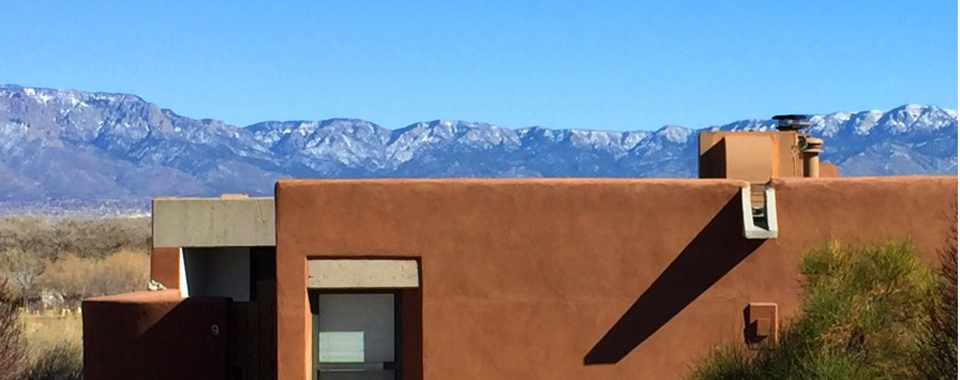
History and Architecture
La Luz del Oeste, a planned community on the west side of the Rio Grande close to the bosque and west mesa in Albuquerque, New Mexico, dates from 1968. The idea for the community grew out of conversations between Ray Graham and Didier Raven, young men in the late 1960s, who dreamed of a new kind of development––an innovative, middle class community that made use of shared spaces and open land. Graham provided the financing. Raven found the land, served as developer, and recommended young architect Antoine Predock. They broke ground in 1968, with contractor Gunnar Dahlquist overseeing construction, and later architect Hildreth Barker designing a 1974-76 expansion. In 1978, the New Mexico Historic Preservation Division listed La Luz as Site No. 539 on its Registers of Cultural Properties in the State of New Mexico.
As V.B. Price, Albuquerque journalist, has written, “La Luz is the most important cluster development in New Mexico and perhaps the most beautiful one anywhere in the country.” La Luz was the first solo commission of now internationally renowned and award-winning architect, Antoine Predock. His design respects and follows the contour of the land, offering both privacy and a sense of community. Gently meandering streets lined by low adobe buildings nestle close to the land as sculptural forms, terraced and descending to the bosque and the Rio Grande below. Communal plazas, fountains, and walls broken by gates lead to personal gardens. La Luz’s design creates tranquility and separation from the dizzying pace around it, and is one of the reasons La Luz continues to draw new residents from all over the country.
The La Luz Landowners Association, its landscape and architecture committees, have made sure that La Luz remains true to its original design. All 96 homes in the community share equally in the governance with financial support and committed volunteer efforts. In 2018, La Luz celebrated 50 years of groundbreaking community living, architecture, and environmental preservation, held social events, and published a book on its history, The Legacy of La Luz: Building Community with Respect for the Land.
